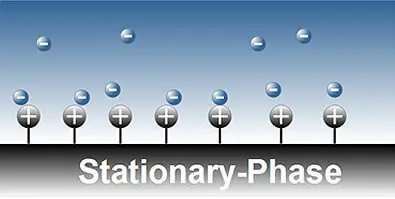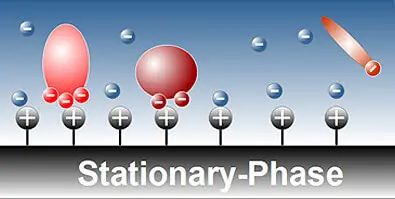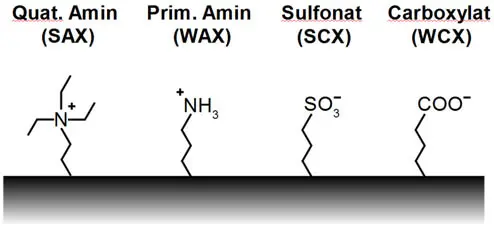Auschecken über Ihr Konto
Als Neukunde auschecken
Ein Konto zu erstellen hat viele Vorteile:
- Bestellungen und Sendungen verfolgen
- Alte Bestellungen einsehen
- Schneller zur Kasse gehen
Ionenaustauschchromatographie
Die Ionenaustauschchromatographie (IEX) dient der Trennung und Analyse von geladenen bzw. ionisierbaren Molekülen. Es wird zwischen Anionen- und Kationenaustauscher unterschieden, des Weiteren zwischen starken und schwachen Austauschern.
- SAX: starker Anionaustauscher (Strong Anion Exchanger)
- WAX: schwacher Anionaustauscher (Weak Anion Exchanger)
- SCX: starker Kationaustauscher (Strong Cation Exchanger)
WCX: schwacher Kationaustauscher (Weak Cation Exchanger)
Die Ionenaustauschchromatographie wird häufig als Biotrenntechnik für Proteine und Antikörper verwendet. Proteine werden dabei nach ihrer Netto- oder Oberflächenladung getrennt, die abhängig ist von dem pH-Wert und der Ionenstärke der mobilen Phase. Weitere Anwendungsgebiete sind Oligonucleotide, Zucker, RNA- und DNA-Moleküle und weiteres mehr.
Die Ionenchromatographie und die Ionenausschlusschromatographie sind zwei Spezialfälle der Ionenaustauschchromatographie mit eigenen Säulentechnologien für spezifische Anwendungen.
Schreiben Sie uns eine Nachricht und wir werden uns schnellstmöglich bei Ihnen melden.


